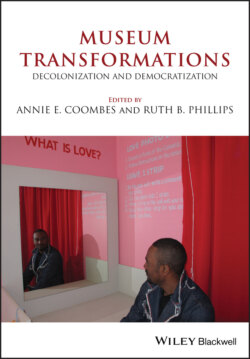Читать книгу Museum Transformations - Группа авторов - Страница 31
Memory discourse after unification
ОглавлениеAfter unification, the situation changed for both parts of Germany. During the 1990s German society discussed its history and identity in several public debates. The most prominent and controversial among them were the disputes surrounding Daniel Jonah Goldhagen’s book Hitler’s Willing Executioners, the plan to build a central Holocaust memorial, a speech by the writer Martin Walser, and an exhibition dealing with the crimes of the German Wehrmacht. The Holocaust was at the center of all these debates which raised important questions about guilt, responsibility, shame, and the role remembrance of the Holocaust should play in Germany’s national self-conception. Meanwhile, Chancellor Helmut Kohl, who promoted a “politics of history” as part of his government’s public policy, built a new historical museum in Bonn and revived the Neue Wache (New Guardhouse) in Berlin as a central place of commemoration for all victims of World War II. But this attempt to include each and every group and individual in the category of “victim” was not successful. The Central Council of Jews in Germany protested, as did members of citizens’ groups (Reichel 1999; Niven 2002, 197–200).
Not least, as a result of the deficits of the Neue Wache, the project of a central Memorial to the Murdered Jews of Europe, which had been initiated in 1987 by a small citizens’ initiative based in West Berlin, became very prominent after the fall of the Wall and was soon hotly debated in public. Two architectural competitions to decide on the form of such a memorial took place during the 1990s; in 1992 the City of Berlin, the Federal Ministry of the Interior, and the citizens’ initiative (which called itself the Association Memorial to the Murdered Jews of Europe) had already agreed on a plan to build the future memorial on a barren strip of land called Ministry Gardens. The place is a prime example of an urban palimpsest (Huyssen 2003); it carries multiple layers of German history (Schlusche 2005; Jordan 2006). During the Nazi period it had been the backyard of the Ministry of Agriculture, situated not far from the former Reich Chancellery of Adolf Hitler and the Führer-Bunker; it had also housed the private home and bunker of the Minister of Propaganda, Joseph Goebbels. Bombing raids in the spring of 1945 had destroyed the buildings in the area.
The site was cleared of rubble in the early 1960s. With the construction of the Berlin Wall in 1961, the Ministry Gardens became part of the “death strip” behind the Wall (Foundation Memorial to the Murdered Jews of Europe 2010, 9–11).
